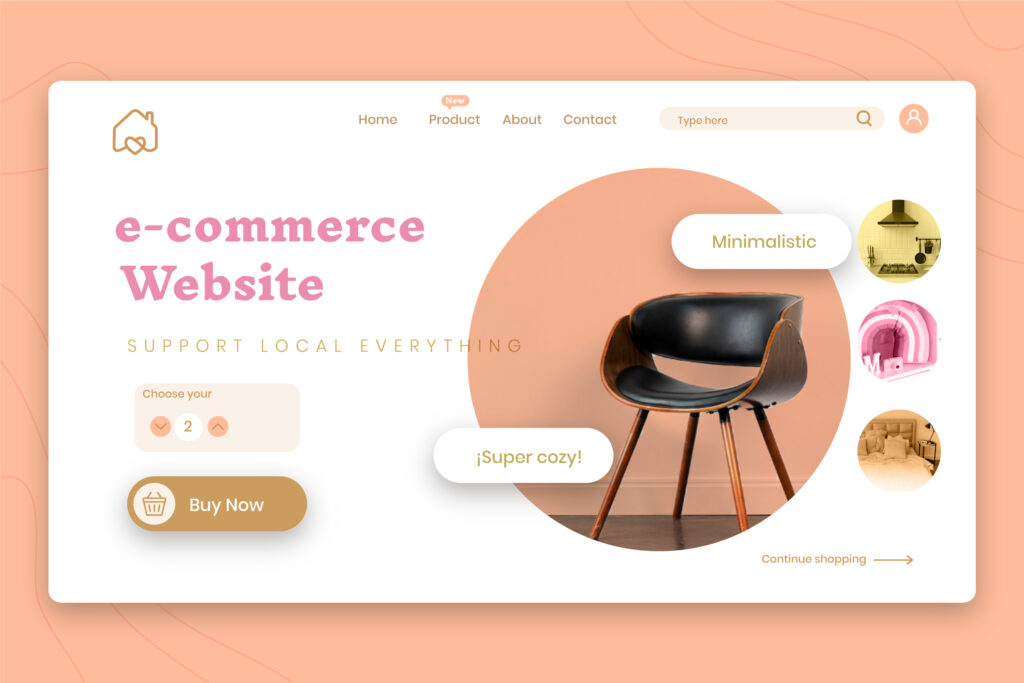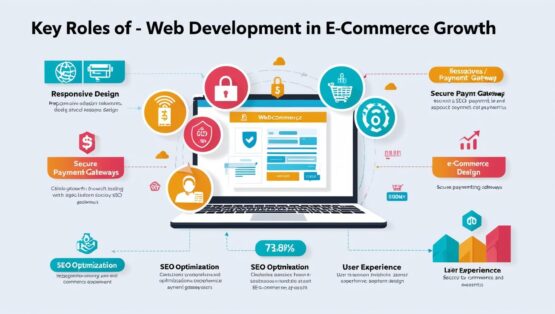In the highly competitive world of online retail, having a user-friendly e-commerce website design is of utmost importance for the success of your business. User-friendly is one of the most important factors you need to consider when designing your E-Commerce site. A usable E-Commerce site should take less time to think when used, and less complex. A well-designed website not only enhances the shopping experience for your customers, but it also uplifts your brand image and increases your online sales and conversion rates. This article examines the significance of a user-friendly e-commerce website design and the role it plays in today’s rapidly changing digital landscape.
The Impact of User Experience on Online Sales and Conversion Rates

One of the key advantages of a user-friendly e-commerce website design is the impact it has on online sales and conversion rates. Websites live and die by their conversion rates. Good conversion rates mean more sales and revenue while poor conversion rates mean that you’ll struggle to keep your business afloat.
A positive user interaction can mean the difference between a customer making a purchase or leaving your website in search of a better shopping experience. A well-designed website with a ease of use navigation system, easy-to-find product information, and simple checkout process can greatly improve the likelihood of a customer completing a purchase.
Why a User-Friendly E-Commerce Website is Essential for Mobile Shopping
With the increasing demand of mobile shopping, having a user-friendly e-commerce website design has never been more important. In fact, recent studies show that over 60% of online purchases are made on mobile devices. This means that a website that is not fine – tuned for mobile devices is likely to have a high bounce rate and a low conversion rate. A mobile-friendly website has better SEO because it loads faster and shows up higher in search results. This helps your site earn organic traffic. In addition, mobile visitors convert at a much higher rate than desktop visitors thus boosting up conversion rates through improved user experience. A mobile optimized , user-friendly e-commerce website design ensures a smooth and enjoyable shopping experience for users.
Design Trends for Creating a User-Friendly E-Commerce Website

There are numerous design trends that are considerably important when designing a user-friendly e-commerce website. These include the use of clean and simple design elements, easy-to-use navigation and well organized site layout, high-quality product images, and distinctive product elaborations. Additionally, including user feedback and A/B testing can help you optimize your website design and make it even more user-centric.
The Role of Navigation and Site Structure in E-Commerce Website Design
The navigation and design of your e-commerce website play a crucial role in creating a user-centric experience for your clients. A clear and user-friendly navigation structure makes it easy for customers to find what they are looking for, while a crowded and confusing site structure can lead to frustration and a high bounce rate. Moreover, using distinct and elaborative product categories can help customers to find out the products they are interested in much more quickly and easily.
The Importance of Clear Product Descriptions and High-Quality Product Images
Clear product descriptions and high-quality product images are essential components of a user-friendly e-commerce website design. Informative product descriptions aid customers in making informed buying choices, while high-resolution product images offer a clear and comprehensive view of the products they’re interested in. Additionally, incorporating 360-degree product views and interactive product images can largely improve the shopping experience for your customers.
Enhancing User Trust and Security through E-Commerce Website Design
In today’s digital landscape, the trust and security of your customers’ personal and financial information is of utmost importance. A user-friendly e-commerce website design can boost customer trust and security by incorporating secure check out processes, clear privacy policies, and verified customer reviews. These features not only improve the shopping experience for your customers, but they also help to safeguard your business from potential security violations and negative reviews.
The Benefits of A/B Testing and User Feedback in Improving E-Commerce Website Design

Improving the user-experience of your e-commerce website is powered by A/B testing and user feedback . A/B testing allows you to test different design elements, such as website layout, navigation structure, and product specifications, to determine which elements have the greatest influence on user experience and conversion rates. User feedback, on the other hand offers valuable information regarding the preferences and dislikes of your customers regarding your website, as well as their suggestions for improvement. By incorporating A/B testing and user feedback into your e-commerce website design process, you can continuously filter and improve your website to ensure that it provides the unparalleled shopping experience for your customers.
In conclusion, a user-centric e-commerce website design is important for the success of your business in today’s digital landscape. A website that is designed well brings a multitude of advantages to both your customers and your enterprise, ranging from increasing online sales and conversion rates to increasing user trust and security. By considering the design trends, navigation and site architecture, product specifications and images, security, and including user feedback, you can create a user-friendly e-commerce website that distinguishes your business from others in the market.




